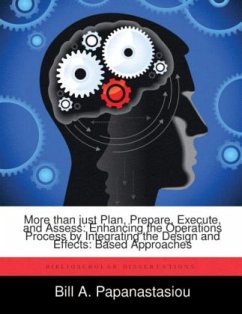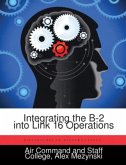With the end of the Cold War and the collapse of the Soviet Union in 1989, the grip of superpower strictures loosened resulting in an increase in complexity and dynamism that marks today's security environment. The rapidly changing and uncertain environmental and strategic realities of the past fifteen years have compelled U.S. operational and strategic leaders to review their understanding of operational art, find extant operational voids, and fill them with new or renewed conceptual approaches. The aim of this monograph is to conduct an evaluation of the two most predominant experimental theoretical constructs - Effects-Based Approach to Operations (EBAO) and Design - and confront the challenge of integrating practical elements of the two constructs into the cyclic operations process: plan, prepare, execute, and assess. This research finds the two alternative conceptual approaches to operational thought - EBAO and Design - as having considerable irreconcilable differences.Whereas EBAO applies a systems perspective to develop solutions through center of gravity and nodal link analyses, Design focuses on deriving a deeper systemic understanding through heuristic thinking and learning. In practice, overly reductive and algorithmic additions to the original EBAO concept, such as System of Systems Analysis (SOSA) and Operational Net Assessment (ONA), discredited EBAO in the eyes of numerous U.S. Military senior leaders. Having fallen short on meeting its promise of predictivity, EBAO must return to its original principles to retain any relevancy in today's complex operational environment. Nevertheless, integration is possible considering the similarities in methodological techniques. Of the two approaches Design is the superior approach while operating in complex environments. Complimented by select EBAO elements and offering a broader holistic thinking and learning methodology, Design significantly enhances the commander-driven activities of the operations process.
Hinweis: Dieser Artikel kann nur an eine deutsche Lieferadresse ausgeliefert werden.
Hinweis: Dieser Artikel kann nur an eine deutsche Lieferadresse ausgeliefert werden.








